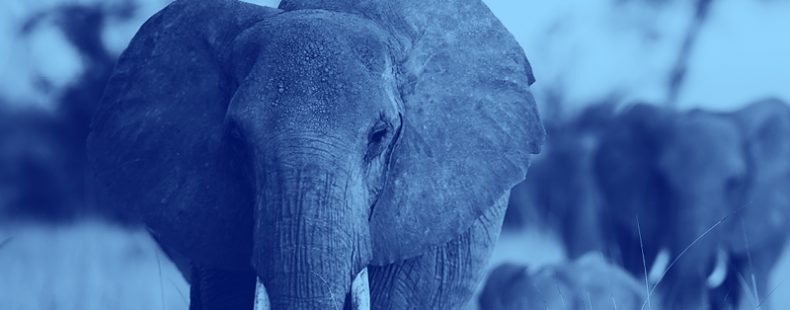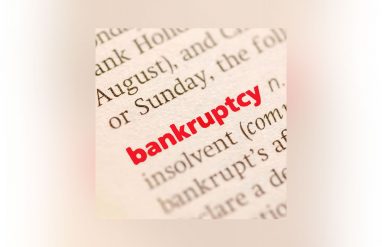They say an elephant never forgets. In more than 60 years, the world’s leading conservation organization—World Wildlife Fund (WWF)—has never forgotten the elephant. And neither should we.
In honor of World Elephant Day 2020, Dictionary.com teamed up with WWF to go behind the scenes and share new words relating to this type of pachyderm (a fun word that refers to very large mammals with thick skin, like an elephant!) and how we can keep this noble mammal alive and well on the earth.
With ongoing threats to elephants and their habitat in 2021, we once again lift up efforts to bring attention to the plight of this animal. They need our help more than ever.
keystone
On Dictionary.com, keystone is defined as “something on which associated things depend.” In the context of World Wildlife Fund’s work, keystone is most often used as a part of the phrase keystone species, which is a species that plays an essential role in the structure, functioning, or productivity of a habitat or ecosystem. Keystone species are essential for maintaining healthy habitats and ecosystems, including humans, who depend on food, water, and other natural resources.
Elephants are an example of a keystone species that helps maintain biodiversity in their habitats. They create pathways in dense forested habitats that allow passage for other animals, and elephant footprints can fill with water, creating micro-ecosystems for other organisms. Other examples of keystone species include gorillas, whales, polar bears, pandas, tigers, and rhinoceroses. Preserving and saving these animals also helps to save and preserve their habitats and the other species who live there.
poach
You’re likely familiar with the standard definition of poach: “to trespass, especially on another’s game preserve, in order to steal animals or to hunt.” What you may not know is how serious the impact of modern poaching really is. An estimated 20,000 elephants per year are killed for their ivory, according to the experts at World Wildlife Fund. And elephants are not the only targets of poachers. Other endangered species like tigers, rhinoceroses, and pangolins are also at risk, often poached for their parts to be used as status symbols and in traditional medicine, clothing, or food.
Poaching, along with habitat loss/degradation and climate change, has become one of the greatest threats to wildlife. As wildlife habitats shrink and the human populations grow and expand into these areas, there is an increase in the competition for resources among wildlife and people.
Poachers are often part of a well-organized wildlife crime network and pose one of the biggest threats to keystone species. World Wildlife Fund works with many organizations to combat poaching. One important and often overlooked way they help is through community outreach. In some areas, poaching provides income and a way to support families when other ways to do that are scarce. When organizations like World Wildlife Fund can provide alternative livelihoods and avenues to support the community, it can help people move away from poaching and support local wildlife.
trafficking
To traffic means “to trade or deal in a specific commodity or service, often of an illegal nature.” For World Wildlife Fund, trafficking involves the illegal transport of endangered species. Illegal wildlife trade happens all over the world, including increasingly online. The estimated annual value of illegal wildlife trade is up to $23 billion USD.
There is demand for endangered species in the form of products like elephant ivory or tiger teeth, as well as live exotic pets like birds, reptiles, and primates. World Wildlife Fund has a Cyber Spotter program, through which individuals can be trained to detect and report illegal wildlife trade on partner platforms. You don’t have to be an expert to get involved!
TRAFFIC was jointly founded by WWF and the International Union for Conservation of Nature (IUCN), and works to ensure that trade in wild plants and animals is not a threat to the conservation of nature. TRAFFIC works globally on trade in wild animals and plants in the context of both biodiversity conservation and sustainable development.
pangolin
If you’ve never heard of a pangolin, you’ll certainly be surprised to learn that it’s one of the most trafficked mammals in the world, with an estimated 1 million pangolins trafficked over a 10-year period. Pangolins are mammals that are covered in hard, overlapping scales made of keratin, and feed on ants and termites. They’re actually the only mammal that is completely covered in scales, and they use those hard scales to protect themselves from predators.
Pangolin meat is considered a delicacy in parts of Asia and locally consumed in Africa as bushmeat. They’re most in demand for their scales, which are used in traditional medicine, but their skins are also used to make leather products. As a result, illegal trade of pangolins poses a huge threat, and all eight species of pangolin are protected under national and international laws.
ivory
Ivory is “the tooth or tusk” of several different species like elephant and warthog. Elephant ivory is in high demand for carved products like sculptures and jewelry. This trade fuels the poaching crisis facing African elephants today, with an estimated 20,000 poached annually for their tusks.
Selling elephant ivory is illegal in many countries, including the United States. Despite regulations, the material is still in high demand.
However, two years after China imposed a ban on domestic ivory trade in 2017, consumer demand for the elephant ivory appeared to be stabilizing. Nevertheless, “diehard buyers” still have a strong desire to buy ivory.
World Wildlife Fund is working to combat the problem by engaging directly with elephant ivory consumers, working with other governments to close functioning ivory markets and partnering with e-commerce and social media companies to stop the sale of ivory online. The Coalition to End Wildlife Trafficking Online launched in 2018 with WWF, TRAFFIC, and the International Fund for Animal Welfare (IFAW), and now comprises 36 global online technology companies including Google, eBay, Facebook, Alibaba and Tencent. This collaboration aims to unite the tech industry to standardize prohibited wildlife policies, train staff to better detect endangered species products such as elephant ivory, enhance automated detection filters, and educate and empower users to report suspicious listings.
fauna
Many people don’t know the fauna part of the phrase flora and fauna is actually about animals. Fauna are “the animals of a given region or period considered as a whole.” The large scale loss of wild animals in a particular area is known as defaunation.
According to WWF’s Living Planet Report in 2018, in the last 40 years, there has been a 60 percent decline in the size of populations of mammals, birds, fish, reptiles, and amphibians.
We can see this firsthand in Southeast Asia, where World Wildlife Fund is combating a snaring crisis. Snares are homemade traps used to capture animals for local meat consumption as well as the illegal wildlife trade, and they are having a devastating impact on the local fauna. Over 200,000 snares were removed from just five protected areas in Southeast Asia between 2010 and 2015.
Defaunation is devastating because of the loss of biodiversity, and the way that impacts ecosystem services which people depend on. A healthy ecosystem is vital to maintaining natural resources people depend on, like clean water, food, and wood, which ultimately protects human health.














